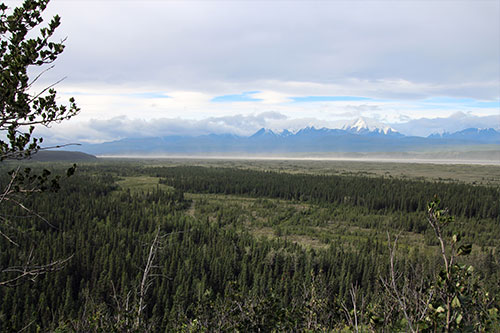
Study: Several scenarios for earliest migration to Americas remain viableBy JEFF RICHARDSON
August 10, 2018
Ben Potter, a University of Alaska Fairbanks professor of anthropology, said genetic, archaeological and paleoecological data has determined that certainty about the coastal route is “prematurely narrow.” Instead, at least two viable scenarios could account for the peopling of the Americas during the last ice age — one focuses on an ice-free inland route through present-day Alaska, while the other traces the North Pacific coast.
An Aug. 8 paper in the journal Science Advances argues that more research is needed to determine how that migration occurred between 16,000 and 14,000 years ago. The paper pushes back on recent academic and popular literature that asserts colonization has been largely resolved in favor of a very early coastal migration. “It’s premature to speculate we know at this point with such certainty,” said Potter, the study’s lead author. “We’re saying there’s not enough evidence yet — we need more science on both routes.” Potter and the paper’s 15 co-authors, comprising leading geneticists, archaeologists and paleoecologists, believe the coastal route is a viable hypothesis but shouldn’t be favored over an inland route. Although much of the Northwest Pacific ancient shoreline remains above current sea level, the oldest archeological sites in those areas are only about 12,600 years old. The oldest site found in Interior Alaska dates to about 14,200 years ago. Also, the study argues that known pre-migration populations in Siberia, the Russian Far East and Beringia were adapted to terrestrial rather than coastal environments. Another recent narrative suggests stemmed spear points around the Pacific rim could be hallmarks of an early coastal migration. This study points out that no detailed analyses have been done on whether these points came from the same people or were developed independently. Two other UAF-led studies published earlier this year also introduced new science that underscores the need for more study on migration routes, Potter said. Through DNA analysis of an infant’s remains from an Interior Alaska site, a research team led by Potter revealed in January that a previously unknown population they named “Ancient Beringians” split from the ancestors of other Native Americans about 20,000 years ago. After migrating to the Americas, analysis suggests the Ancient Beringian people remained in the Far North for thousands of years while other Native Americans moved south. In June, a study led by UAF professor of marine biology Matthew Wooller was published that found the climate on the Bering Land Bridge became wetter and warmer about 15,000 years ago, a change that likely encouraged human migration from Asia to North America. “They could have taken multiple routes, there could have been multiple pulses,” Potter said. “There’s a lot we don’t know. But what we do know is that the migrations encompassed multiple groups, Ancient Beringians, and all other Native Americans at least, and that they migrated sometime after 16,000 years ago and before the widespread Clovis culture at 13,300 years ago.”
On the Web:
Representations of fact and opinions in comments posted are solely those of the individual posters and do not represent the opinions of Sitnews.
|
||||
